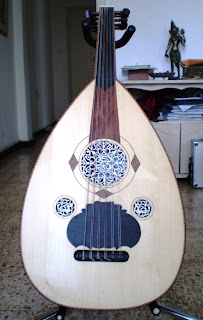


My second study program in Israel is through the Pardes Institute of Jewish Studies. I have heard great things about Pardes for years (really ever since I was a rabbinic student) and promised myself that if I ever had the chance to go sit and study in Israel, Pardes would be one of the places that I would go. Pardes is a place to go and immerse yourself in the study of classical Jewish texts, like Torah, Talmud, TaNaCH (Bible), Midrash, and Halakha. They welcome both men and women, from across the Jewish spectrum, and this is still pretty unusual in the world of Jewish text study - men and women studying together, and welcoming people of diverse backgrounds.
Both Pardes and Hartman are orthodox institutions, but they are welcoming to Jews from across the spectrum. I learned on the first day that Pardes does not consider itself a pluralistic institution, they will follow halacha, but you are free to do what you want. Of course, then you might decide to become more observant as a result of your experiences there. I really appreciate the opportunity to study here with very knowledgeable teachers and to look at things from a different perspective, and again to be learning with students from diverse backgrounds. It is taking me out of my comfort zone and challenging all of us to look at things in new ways and from new perspectives. And, I’m learning text and backgrounds to text in ways that are very different from my Reform rabbinical school training. Sometimes that is a bit unsettling, and in some cases continues to be so (particularly from my feminist perspective), and other times it was like a whole new window opening on something I thought I had understood before, and now have an additional understanding. That’s what it means to truly wrestle with the text. For my part, although other Reform rabbinic colleagues have studied at Pardes before me, I had a bit of trepidation about announcing myself as a Reform rabbi, but found that people accepted me pretty much without issue.
Most of the students at Pardes tend to be younger - college students or post-college studying in the year program, but during the summer programs there are more older students. In my group there are about 1/3 my age or older, and 2/3 are twenty-somethings. This group is a mix from the US, Canada, Germany, France, Australia, and Israel. Interestingly, there are more women than men (or maybe not so much since it’s harder for women to find programs that welcome them). Many come from day school backgrounds, but there are some beginners as well. I am really energized by the fact that there are both young and older people who take their Judaism seriously enough to devote their time and money to coming to sit and study text over their summer break - it gives me hope for the future of the Jewish people. Sometimes I get very depressed over the lack of interest or knowledge within the Jewish community of North America.
The theme for this summer session is “Israel is Real”. I’m finding the approach here to be very different from Hartman, which is good, considering that the themes are very similar. Classes are also yeshiva-style, meaning that we spend some time with the teacher giving introductions and instructions for the materials, and then we sit in the bet midrash in chevruta (traditionally Jewish texts are learned aloud with a partner) and learn the texts together. During this time our teacher is in the bet midrash to offer help and assistance. My Talmud class is “Eretz Yisrael in Halacha and Aggada, through the lens of the last chapter of Ketubot; My TaNaCH class is “The Ideal State”, a view of Israel during the time of King Shlomo’s reign, and the attempt to build an ideal state, (maybe it will give us some insights about modern attempts) as we read the book of Melachim.





















